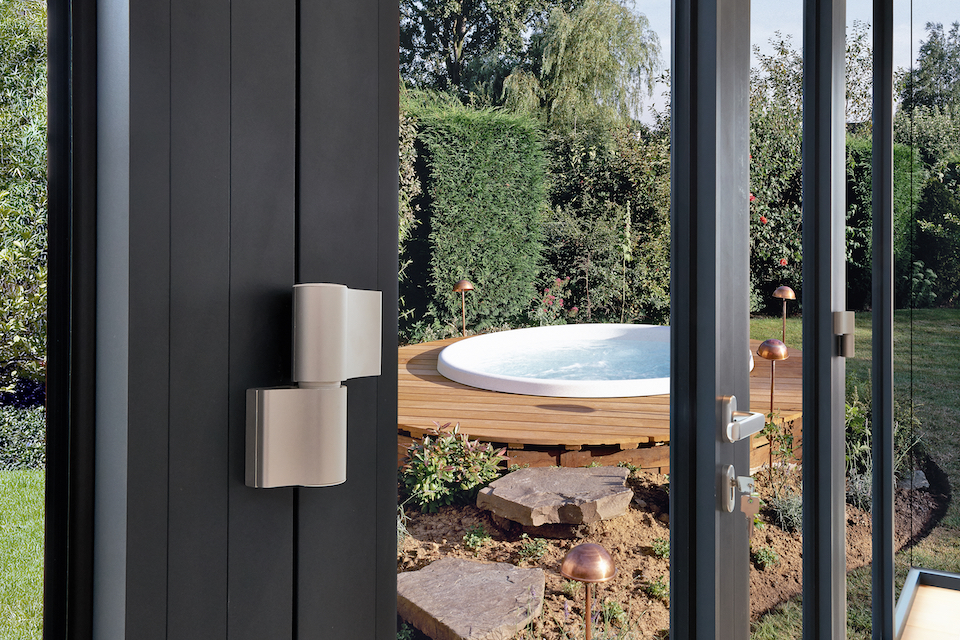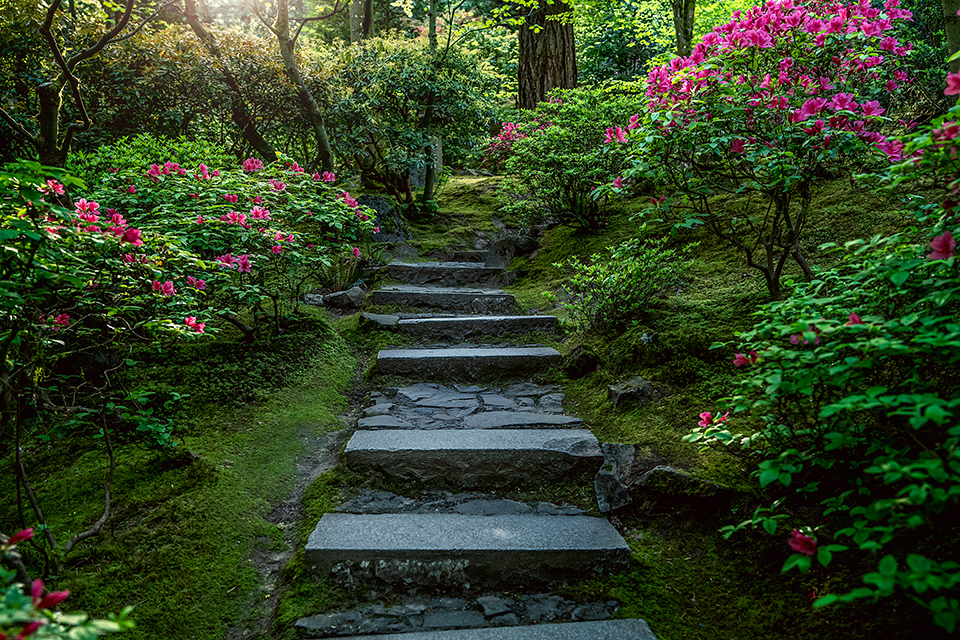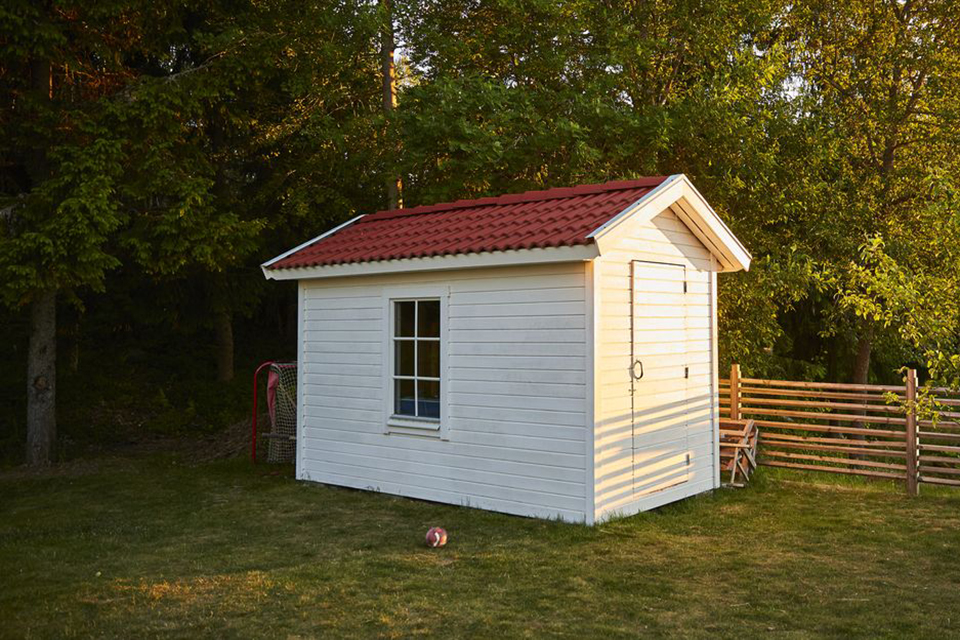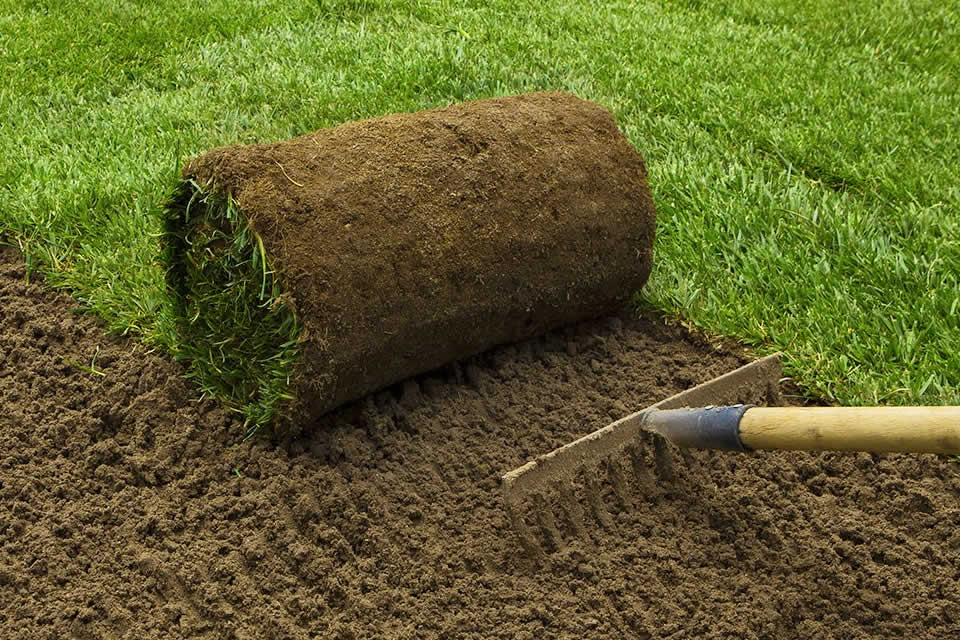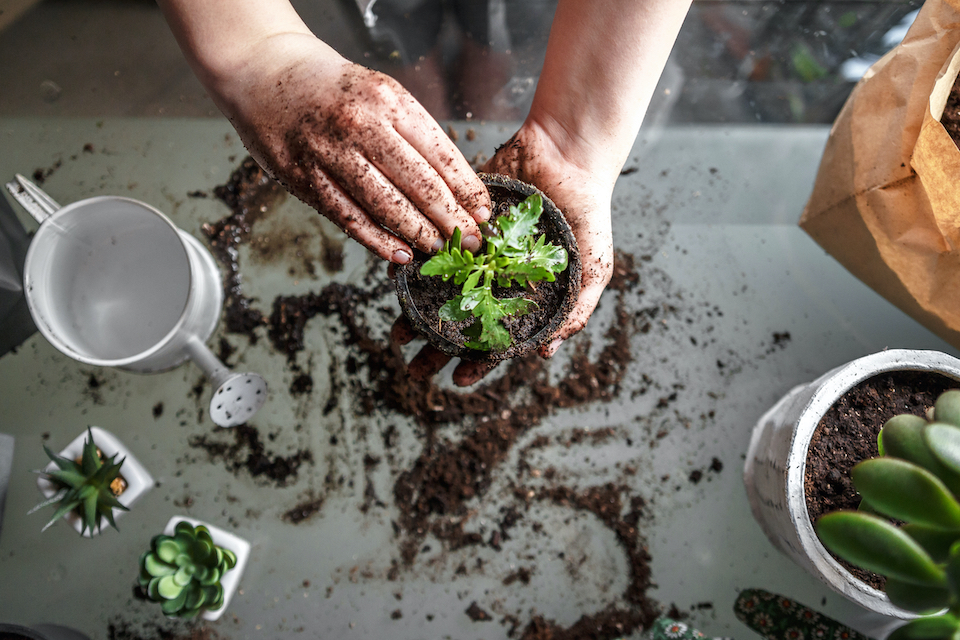How Much Does a Garden Renovation Cost?
If your home has an outdoor space, you'll undoubtedly want to take advantage of it. Of course, saying it is easier than doing it.
Getting your garden to look amazing is a major job that requires a lot of thought. It's also easy to procrastinate on, especially as the seasons change. It's never too late to care for your garden.
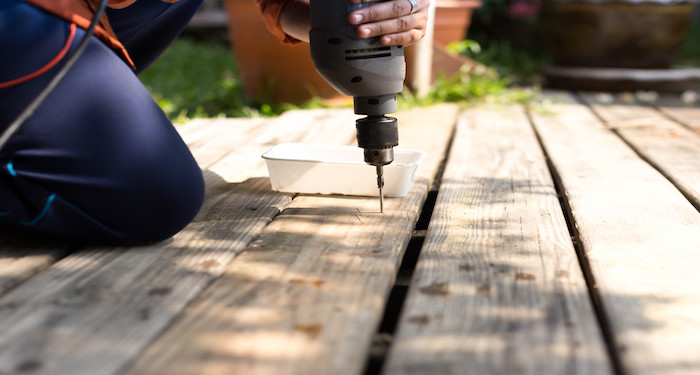
It all depends on what you want!
Finding an average cost of renovating a garden is hard as the overall cost depends on the size of the garden, the type of renovation you want on your garden and how many labourers will be needed for the job.
For a transformational project on a large back garden of 100m2, the garden design cost will typically range between £7,000 - £12,000.
Once again, the price does depend on materials, labour charges and the time it takes to complete the job. Therefore, if you are on a tight budget, then it is probably best to see how much you have and what work you can get done with the price.
Making a difference...
If done correctly, elements such as lawn and plants can make a significant difference. For supplies and installation, a 50m2 lawn costs around £700 - £1,200 on average, or around £15 - £20 per m2.
The turf itself costs roughly £20 per m2, and you can save money by laying it yourself.
Planting a few tiny trees around the garden will give it a nice frame and won't cost you anything. When in blossom, ornamental cherry trees cost between £25 - £150 per tree and make a wonderful decorative highlight. Small differences to your garden will create a great difference in your living space.
In most circumstances, you'll need to hire a garden designer and landscaper. For both labour and materials, expect to pay £100 per square metre on average.
Here's a way to keep the costs down...
The total garden design cost might reduce to £30 per square metre if you're comfortable with the overall look and only want to focus on planting. Finally, the cost will be determined by the size of your budget, the size of your garden, and your grandiose goals.
For supplies and installation, a 50m2 lawn would cost around £700 - £1,200 or about £17.50 per m2.
You can always try it yourself!
Because turf is a fraction of the price, at roughly £4 per m2, you might want to try laying it yourself.
Garden Design Prices
In the table below, we will go through the average garden renovation costs and what you should expect to pay.
| Job | Cost |
|---|---|
| Turfing | £750 – £1,500 |
| Lawn services | £50 - £100 per visit |
| Artificial grass fitted | £60 - £75 per m2 |
| Pruning | £100 - £1,500 |
| Laying a patio | £1,300 - £5,500 |
| Erecting a garden fence | £1,000 - £2,000 |
| Installing decking | £925 - £9,250 |
The type and size of the job, the number of tradespeople engaged, the convenience of access, and the location of your property are all factors that influence the cost of garden restoration.
In most locations, prices in the southeast of England (and particularly London) are higher than the national average. In places like the north of England, Scotland, and Northern Ireland, however, the opposite is true.
What are the Supply Costs of a Garden Makeover?
If you are debating giving your garden a makeover due to the costs, then it is possible to do some jobs DIY.
If you decide to give your garden a makeover by yourself, then you will be saving money on labour costs. Which only leaves you with the supply costs, the things you will need to complete a garden renovation.
Here, we will go through the different supply costs, so you will know how much you will need on average and what you will need to buy to complete your garden makeover.
If you’re looking for a cheap garden renovation, you can go over the costs in this article and determine which garden makeover ideas are most important to you.
First, you will need a lawnmower. This will cost around £90 - £300 depending on the type you want. Although it does seem expensive, having a lawnmower also helps you save money on hiring someone to cut your grass for you.
Then you will need a chainsaw, which will set you back by £50 - £200 once again, depending on the type you want.
You may also need to purchase a rake which costs £15 - £40. A container will cost you around £10 - £300. If you are thinking about installing a flower bed, it'll cost £3 - £40 for a pack of seeds.
A pre-grown plant will cost £4 - £50, and soil usually costs £4 - £15.
A watering can is a good essential to have in your home, this costs £7 - £30, a hand trowel costs £2 - £20, a spade and digging fork will cost you £10 - £50, a hoe will cost £10 - £30 and fertiliser will cost £5 - £30.
Using gardening gloves will make your job easier and less painful. You can buy a pair for £0.50 - £20. Secateurs are an important tool for gardeners. This usually costs £5 - £40.
A hand fork will cost £2 - £30, a hose will cost £30 - £80 depending on the type you need for your garden, and a pressure washer is a good thing to have but not essential this will cost £60 - £200.
There are not many expensive supply costs; however, you do need quite a few tools to complete the job of a garden renovation.
Therefore, before you begin thinking about what you will be doing and what you will need to complete your job.
The table below will breakdown the supply costs with no labour or material costs included:
| Supply | Cost |
|---|---|
| Gloves | £0.50 - £20 |
| Lawnmower | £90 - £300 |
| Chainsaw | £50 - £200 |
| Rake | £15 - £40 |
| Container | £10 - £300 |
| Pack of seeds | £3 - £40 |
| Pre-grown plants | £4 - £50 |
| Soil | £4 - £15 |
| Watering can | £7 - £30 |
| Hand trowel | £5 - £20 |
| Spade | £10 - £50 |
| Digging fork | £10 - £50 |
| Hoe | £10 - £30 |
| Fertiliser | £5 - £30 |
| Secateurs | £5 - £40 |
| Hand fork | £2 - £30 |
| Hose | £30 - £80 |
| Pressure washer | £60 - £200 |
What are the Additional Costs of a Garden Renovation?
When having a garden renovation, it may not go your way, and you might have to go over your budget. However, if you expect what may happen, then you will already know what the process and average price should be.
As a consequence, we have created this section so you can see the additional costs of a garden renovation and know what you expect.
Garden Shed Installation
When having your garden renovated, you might want to have a garden shed installed.
But how much does a garden shed installation cost? The cost of building a shed varies depending on where you live, what materials you wish to use, and how big the shed is.
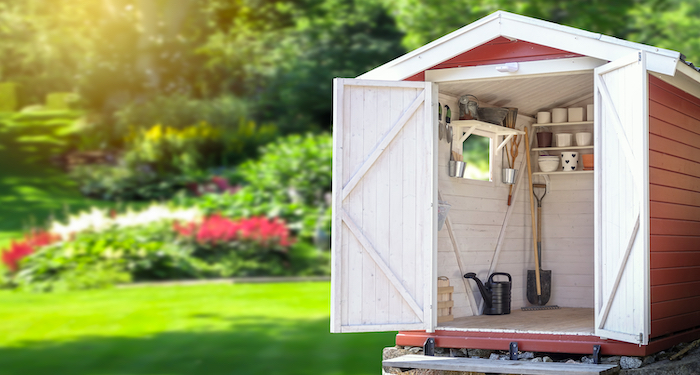
The average cost of installing a wooden garden shed is likely to be between £500 - £5,050. A metal shed of typical size would likely cost you between £300 - £2,200 to install.
Installing a standard-sized plastic shed will most likely cost between £345 - £3,200.
The length of time it takes to install a shed is determined by its size and type.
The ease of access to your property is another aspect that could affect the time it takes to erect a shed. It can take 1 hour up to 2 days to have a shed installed.
The cost of dismantling and removing an old shed will most likely be between £50 - £200 in labour. For rubbish disposal you may need to hire a skip, a 4–5-yard mini skip should suffice, costing between £100 - £265 to hire.
If your shed is quite huge, you may need a large cage skip, which can cost several hundred pounds or another large skip. Between labour and rubbish disposal fees, removing a shed will likely cost you between £150 - £460 on average.
Please refer to our guide on shed installation costs, for further information.
Garden Decking
You might decide you want decking fitted in your garden. Decking installation expenses for 15m2 of softwood decking should be between £925 - £1,600. Between £1,600 - £9,250, composite or hardwood decking will be more expensive.
Softwood decking should cost between £3 - £7 per metre. Other forms of decking are often more expensive, with hardwood decking costing between £6 - £15, composite wood decking costing between £10 - £20, and uPVC decking costing between £9 - £14.
The size of your garden, the state of the decking area (as a bad decking area may require additional groundwork or preparation), and the ease of access to your yard are all factors that influence the time it takes to build decking.
However, if there are no issues, installing decking in your garden should take anywhere from one to four days.
To remove your decking, a professional will most likely price you between £100 - £500. You might also hire a skip for between £100 - £300.
The size of the skip required will be determined by the amount of the decking to be removed. Decking can be disposed of in a skip or by using a 'man and van service.
Please refer to our guide on garden decking costs, for further information.
Hedge Maintenance
A little hedge will cost between £100 - £170 to remove, whereas a medium to big hedge will cost between £225 - £425 to remove.
For a 10-metre hedge, the cost is around £125 - £175, £175 - £225 for a 20-metre hedge, £225 - £275 for a 30-metre hedge, and £275 - £325 for a 40-metre hedge.
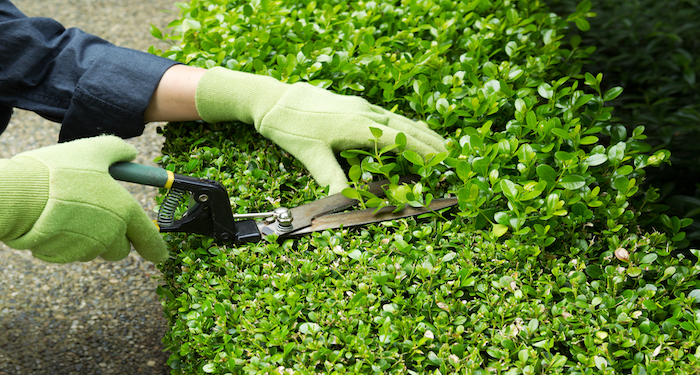
Hedge trimming costs between £150 - £200 for a 10-metre hedge, £200 - £250 for a 20-metre hedge, £250 - £300 for a 30-metre hedge, and £300 - £350 for a 40-metre hedge.
Depending on the size and type of hedge, the number of tradespeople on the job, ease of access, and whether the contractor(s)/company charges per hour or metre, costs might vary dramatically. Hedge cutting and pruning would be more likely to fall under this category.
The amount of time it takes to maintain a hedge will frequently determine the labour cost. If the labour cost is determined by the size of the hedge, then the duration is irrelevant. If you're paying for labour by the day, the duration may or may not matter.
A tiny hedge can take anything from half a day to a full day to clear. A medium to large hedge, on the other hand, will likely take between three-quarters of a day and two days to clear. Hedge pruning will take approximately three hours for a 10-metre hedge.
A 20-metre hedge will take roughly six hours to complete, while a 30-metre hedge will take one working day. Trimming a 40-meter hedge will generally take around a day and a half.
Hedge pruning takes about four hours for a 10-metre hedge, seven hours for a 20-metre hedge, a working day or somewhat more for a 30-metre hedge, and a day and a half for a 40-metre hedge.
Please refer to our guide on hedge removal trimming and pruning costs, for further information.
Minimum Fee
Some garden renovations will demand a minimal fee in addition to the costs of labour, supplies, and garbage collection. As a result, depending on who you choose, this could be an additional cost in terms of garden restoration.
In some cases, a minimum fee will be charged as a predetermined labour charge rather than being added to the total. Some gardeners, for example, charge by the day, so even if the job takes one day and four hours, you'll be paid for two working days.
Number of Tradespeople
Only one gardener will most likely be employed for the work. Larger jobs, on the other hand, may necessitate the use of two or even three labourers.
Depending on the number of contractors recruited, your hourly labour cost would increase or be treble in these instances.
Of course, it would speed up the process, but depending on how well the garden designers collaborate, this may end up costing more in the long run.
Location
Another significant cost aspect is your location. In certain sections of the country, such as the southeast and London in particular, labourers charge higher rates.
Contractors in Scotland, the north of England, and Northern Ireland, on the other hand, typically provide lower rates.
Tradesmen Costs for a Garden Renovation
If you want to hire someone to give your garden a makeover, then it is a good idea to know what to expect with labour costs.
If you're on a budget, then you should know how much you will be paying the tradespeople to come in and give your garden a renovation that is promised it will be high quality.
Due to this, we will go through the tradesmen costs for a garden renovation so you know what you should expect and give you an average cost, so you don't get scammed.
This will only be the tradespeople's costs without any supply, material or additional costs.
Gardeners typically charge anywhere from £12 - £59 per hour for their services. Gardeners' labour prices will vary depending on their location in the UK and their previous experience.
A gardener costs between £120 - £200 per day on average. They rarely work alone, and the most usual configuration is a two-person team.
A trainee, sometimes known as a "labourer," might earn anywhere from minimum wage to £100 per day. A two-person team should expect to pay between £250 - £300 per day.
A gardener may charge a different hourly rate for manual and petrol tools. This is due to the increased cost of maintaining gasoline tools and the fact that they perform faster.
Although he or she may charge more and work faster, a superior finish will come from their knowledge and familiarity with their professional gear.
In the event of an accident, their insurance will cover the costs, and you will not be held liable if they injure themselves while using their tools. They have a vested interest in doing a good job because of their professional reputation and the chance of repeat business and referrals.
How Long Does It Take to Renovate a Garden?
Having an idea of when your gardens makeover will be completed is exciting as it gives you something to look forward to. Therefore, we have created this section so you have an idea of how long it will take for your garden renovation to be complete.
From the first meeting with a garden designer to a fully built and planted plot, it can take anywhere from six months to a year or more.
There are different periods throughout the year that make garden renovations difficult as the weather impacts the day's work which can then make the process longer.
However, the months of April and May are ideal for landscaping and planting trees, shrubs, and perennials. During the spring months, your plants will have the opportunity to grow and adapt before the summer and fall.
The fall, on the other hand, is the optimum season to start landscaping.
From the first meeting to the finished garden, a small garden renovation should take at least four months. This is approximately divided into four weeks for design, two weeks for contractor tendering, six to eight weeks for waiting, and four weeks for construction.
In terms of both time and expense, it's comparable to building a tiny addition on the house.
Types of Garden Makeovers
Different types of garden renovations can have a huge impact on your home. So, if you want to know the different types of garden renovations you can have, then this section of the article will tell you everything you need to know, including the advantages and disadvantages of the different garden makeovers.
Decking
Decking is a common choice for outdoor settings, and it may be used to create a focal point in your yard. Installing decking is also a great method to increase your living and entertaining area while also increasing your home's curb appeal and value.
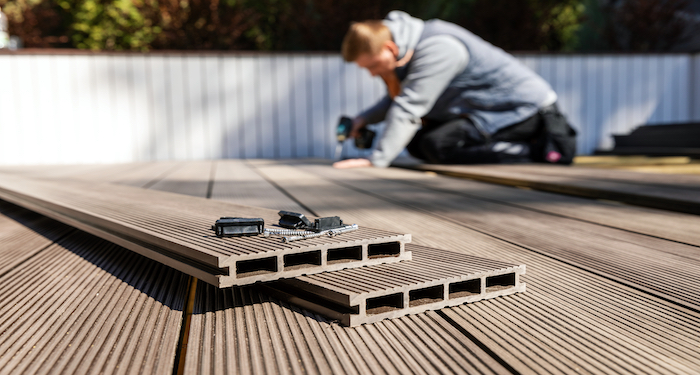
The cost of creating a deck is determined by the amount of space to be covered and the materials to be used. Wood is the cheapest material.
Wood decks, on the other hand, are prone to weather damage and don't last very long, plus they require frequent upkeep. Plastic decking is another alternative, which is sturdy and low maintenance but more expensive and frequently less attractive. Composite decking is the final option.
This is weather-resistant, lasts for decades, and is very simple to maintain. While they are pricey, it is feasible to identify and purchase low-cost composite decking.
A 15-metre square deck will cost between £1,000 - £2,000. Before deciding, make careful to weigh the benefits and drawbacks of each style of decking.
Also, keep in mind that the cheapest solution may end up costing you more in the long run if you need to replace it.
Pros
- Multiple options
- Affordable
- Increases home value
Cons
- Wood decking isn’t durable
- Prone to weather damage
Turfing
A healthy, well-kept lawn is frequently a significant component of backyard remodelling. The cost of laying a new grass lawn is determined by the turf quality and the size of the area to be covered.
Naturally, the higher the grade of the grass, the more expensive it becomes. Grass can range in price from £4 - £20 per square metre.
Expect to pay roughly £900 for a 50-metre square lawn, including labour and turf, if you employ an installation. The cost will differ depending on the type of turf you select.
Lawns require regular upkeep, but if you're willing to handle it yourself, you won't have to pay much in the long run.
Pros
- Affordable
Cons
- High maintenance
Artificial Turf
Artificial grass is becoming increasingly popular since it has the same visual attributes as genuine grass but requires less upkeep. However, the cost is higher, and more preparation is required before it can be laid.
The cost of installing artificial grass can easily exceed £60 - £75 per square metre.
Pros
- No maintenance included
- Looks like real grass
Cons
- More expensive
Patio
A patio is a simple and practical way to increase the usage of your yard by providing a hardwearing and multifunctional space where you may sit and socialise.
Patios are normally priced based on their size, with a cost per square metre that varies depending on the material chosen.
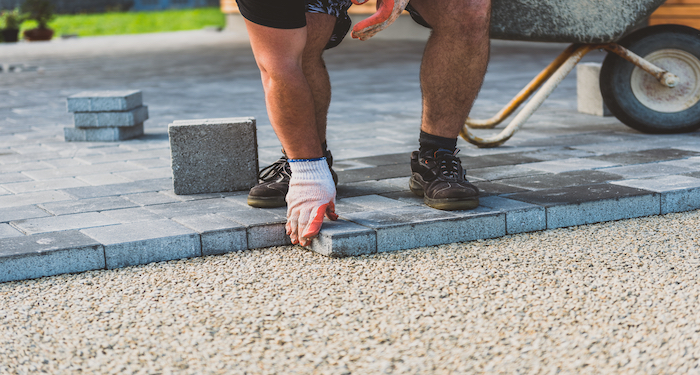
A patio will cost between £30 - £200 per square metre, which includes digging up and levelling the space, putting a membrane, filling it with cement and sand, and laying the slabs, as well as mortaring and cleaning up.
Pros
- Affordable
- It gives you a place to sit in your garden
Cons
- Price can vary
Gardening
Plant-filled Garden borders are an important part of any backyard renovation. They're a great way to add colour, texture, aroma, and height to your outdoor space, and they're also a great method to connect sections or create privacy.
The cost of adding trees and plants to your garden varies greatly depending on the kinds you select and their size at the time of purchase.
Before you set your budget, do some research online or at the garden centre, and try to buy plants that will provide you years of enjoyment to get the most bang for your buck. Make sure you don't get too carried away!
Pros
- Your garden will look pretty
Cons
- High maintenance
Benefits of a Garden Makeover
When having your garden renovated, you will see how life becomes better. If you are still debating it, then here, we will show you the benefits you should expect after having your garden renovated.
Health
Being in nature, pursuing a hobby, inhaling fresh air, and exercising are all good for our mental and physical health.
Physical activity, as well as keeping your mind engaged and enthused, is critical for long-term health. Having a garden and keeping it up to date means you'll have stronger arms, core, and legs.
Happier Living Space
There's something infinitely rewarding about really immersing yourself in something and loving the experience of trying things out, failing, trying again, and then succeeding.
Not to mention the fact that being in the vast outdoors fosters pleasant sentiments of belonging, according to scientific studies. It's even better if you can grow your plants; creating something from scratch gives you a lot of satisfaction in the long run.

Environment
Everyone must do their part to guarantee that the planet we leave for our children is more verdant, lush, and rich than our own.
This can be accomplished in part by ensuring that our garden supports local wildlife, does not pollute the environment, and supplies us with food, allowing us to consume less. With a garden, you can do whatever you want to benefit the environment.
Reproduce Oxygen
By driving cars, using gas-powered heating systems, and purchasing goods from faraway countries, we all contribute to carbon emissions.
However, ensuring your yard is full of CO2-guzzling plants is one approach to offset your contribution to greenhouse gases. A lush garden is far more effective at this than a gravel or lawn-filled area.
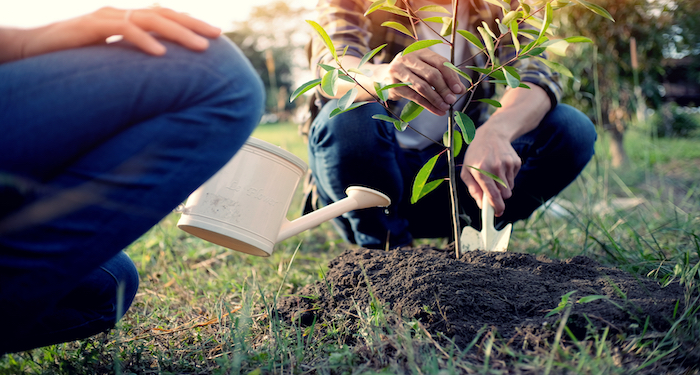
Replenish Soil
You may assist in minimising soil erosion by being careful with your garden and thinking about its place in your local ecosystem.
This happens when the soil's nutrients are depleted due to excessive tilling, growing, and pesticide use. You may help maintain the ground fruitful by being intentional about the plants you employ.
FAQs
Q: How should you plan for a garden makeover?
A: Is it OK for children to play in? Where can you go to dine and drink with your friends and family? Or perhaps one that focuses solely on the cultivation of plants, fruits, and vegetables?
The first step is to decide what you want to do in the garden. This will assist you in properly allocating space.
If the kids require space to run around, you don't want to construct a large rest area. And this doesn't just focus on one aspect of your garden; it's a place for the whole family to enjoy.
It's more about precisely splitting it to meet everyone's demands. So, to plan, visualise how you want your garden to look and get advice from several gardeners.
If you’re looking for a cheap garden makeover, you should weigh up your options and determine which aspects of the garden makeover are most important to you.
Q: What garden renovation ideas will add value to a property?
A: Consider installing gorgeous new flower beds, a solid deck, a patio, or water features the next time you want to increase the value of your property.
Q: What is the best time of year for garden renovations?
A: The months of April and May are ideal for landscaping and planting trees, shrubs, and perennials.
During the spring months, your plants will have the opportunity to grow and adapt before the summer and fall. The fall, on the other hand, is the optimum season to start landscaping.
Q: What does a garden designer do?
A: When you hire a garden designer, the first thing they'll do is ask you for a brief, so they can figure out what kind of design you want.
They can conduct a survey and construct a concept plan from here, allowing them to create a more complete annotated drawing. You have the option of doing the work yourself or hiring a contractor to help you realise your vision and paying the designer to oversee the project.
Q: What is the difference between a landscaper and a garden designer?
A: Landscape can be defined in one easy way: anything that isn't a structure. The design of the landscape is landscape design.
Garden design, by this definition, can be considered a subset of landscape design. It is not any less of skill for that; in fact, it is the polar opposite.

